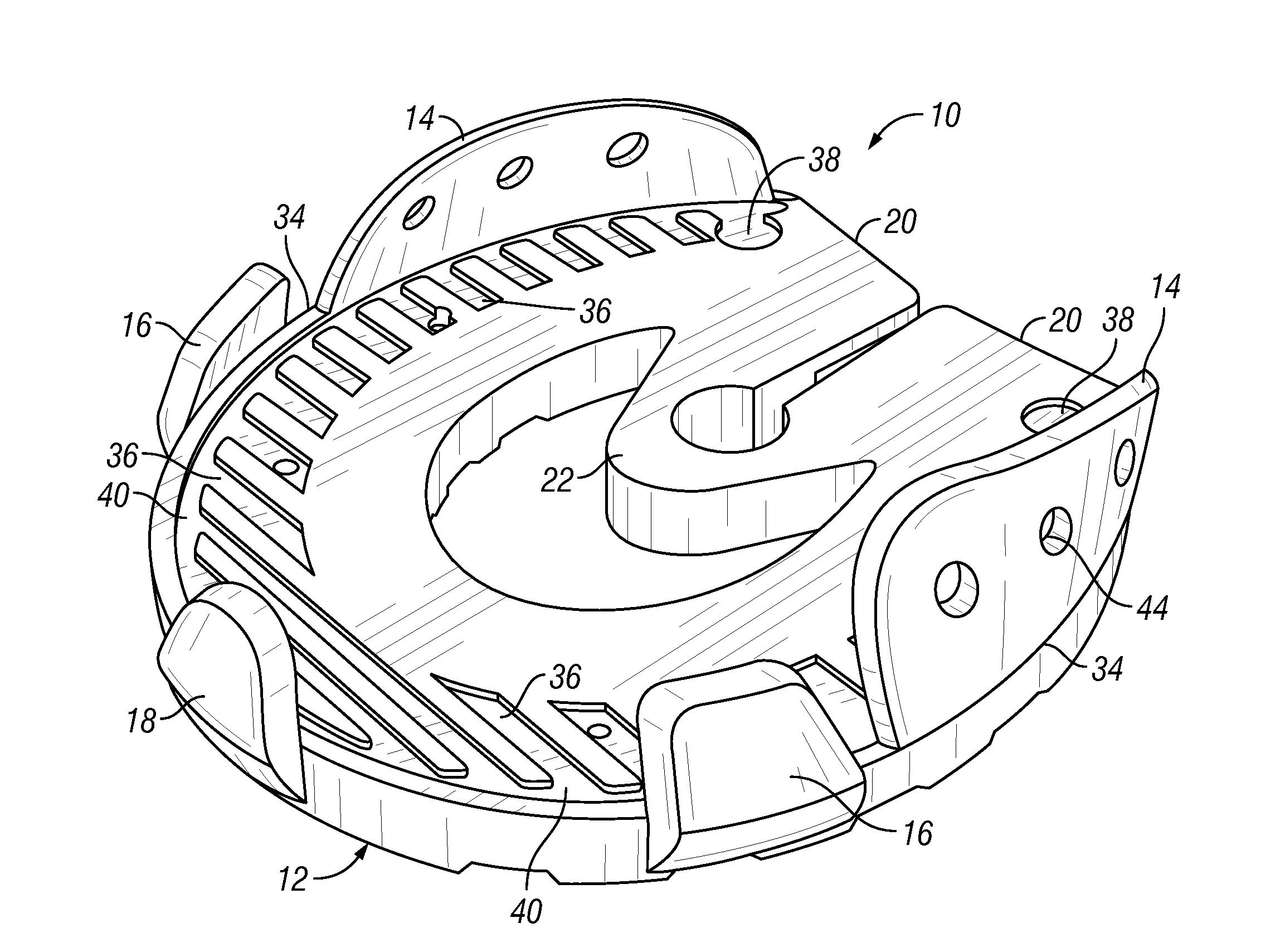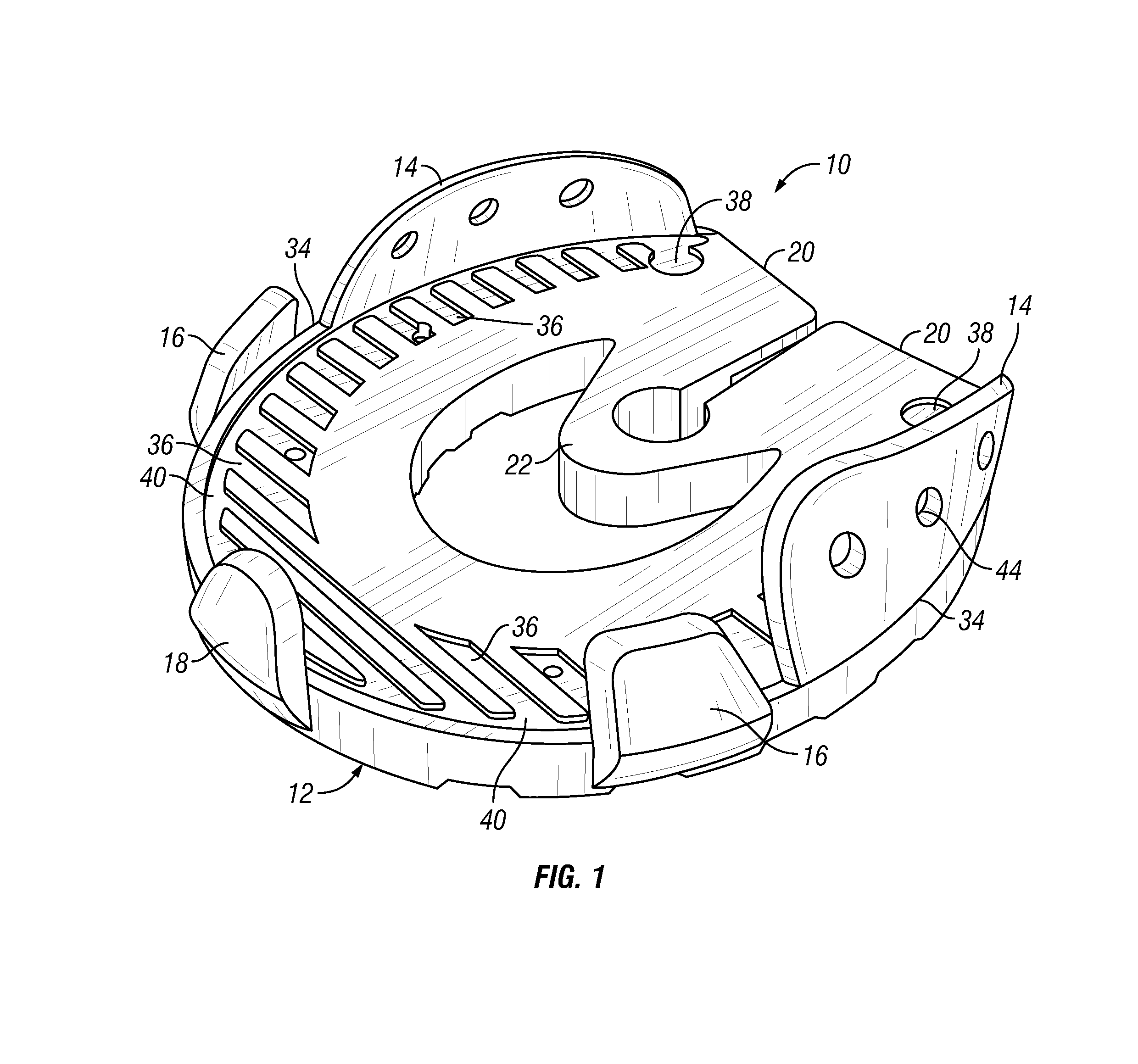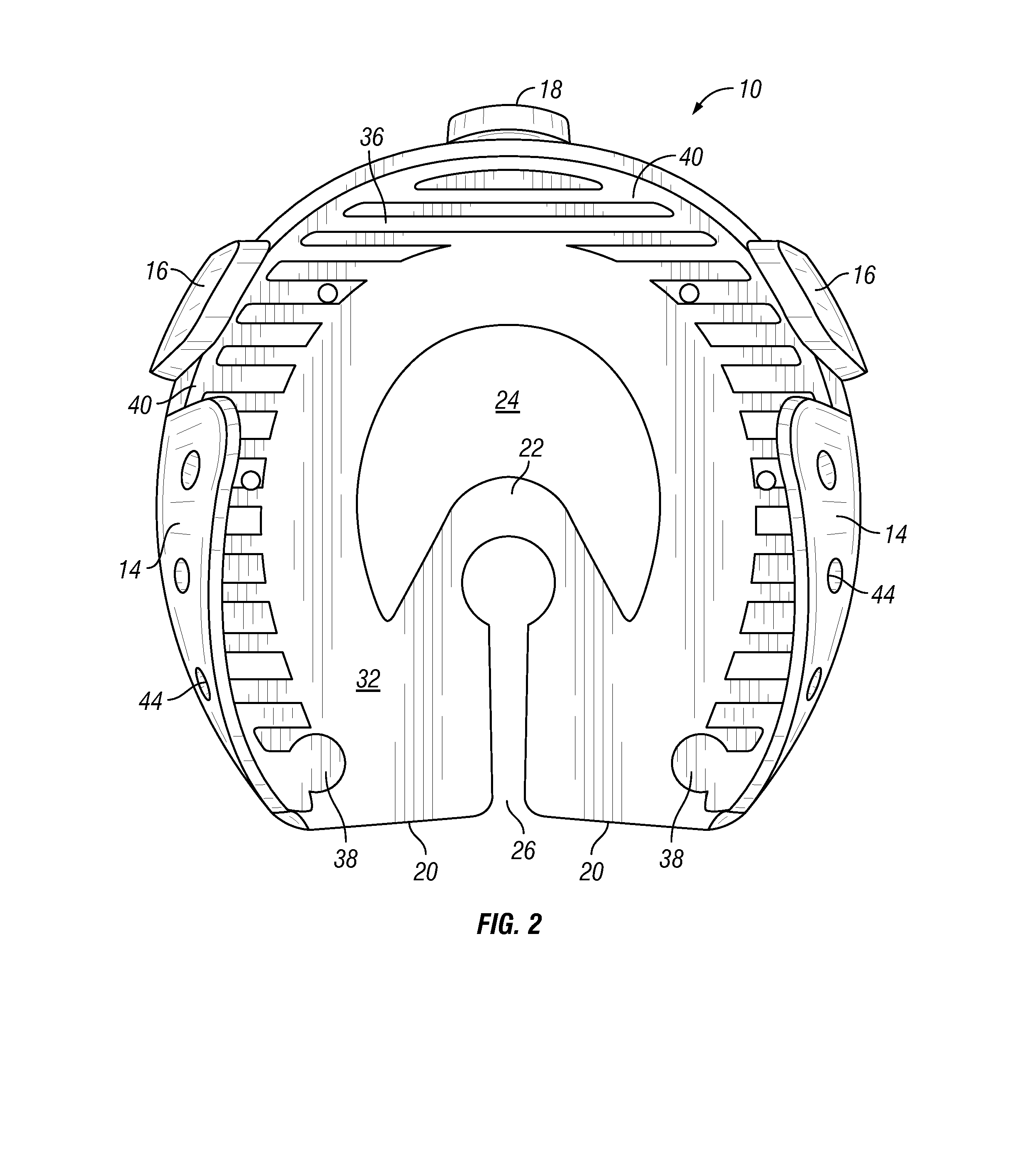Optionally glued-on or nailed-on horse shoe
a technology of horse shoes and nailed-on ends, which is applied in the field of horse shoes, boots and pads, can solve the problems of discomfort or even injury to the frog or hoof, and achieve the effect of preventing and/or correcting the contracted heel condition and limiting the vertical relative displacement of the two ends
- Summary
- Abstract
- Description
- Claims
- Application Information
AI Technical Summary
Benefits of technology
Problems solved by technology
Method used
Image
Examples
Embodiment Construction
[0048]As used herein, the term “horse boot” is intended to refer to a hoof-wear article that wraps substantially completely around the hoof of the horse and often also includes a gaiter attached to the pastern. The term “horse shoe” is used to describe a lower profile item, without a gaiter, that may wrap only partially around the hoof of the horse. The term “sole” is defined to refer only to that part of a horse boot or shoe that covers entirely the underside of the hoof. By contrast, the term “horseshoe” is defined to refer to a structure, made of any material, that is substantially in the form of a conventional iron horseshoe that has an open heel and an interior open area corresponding substantially to the interior underside of the hoof of the horse. As described with reference to the present invention, the heel portions of the heel are connected by a bridging structure. Finally, the term “resilient” is used in this specification to mean capable of deforming when subjected to a ...
PUM
 Login to View More
Login to View More Abstract
Description
Claims
Application Information
 Login to View More
Login to View More - R&D
- Intellectual Property
- Life Sciences
- Materials
- Tech Scout
- Unparalleled Data Quality
- Higher Quality Content
- 60% Fewer Hallucinations
Browse by: Latest US Patents, China's latest patents, Technical Efficacy Thesaurus, Application Domain, Technology Topic, Popular Technical Reports.
© 2025 PatSnap. All rights reserved.Legal|Privacy policy|Modern Slavery Act Transparency Statement|Sitemap|About US| Contact US: help@patsnap.com



